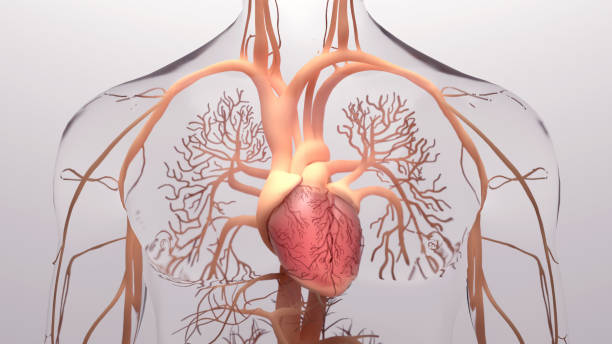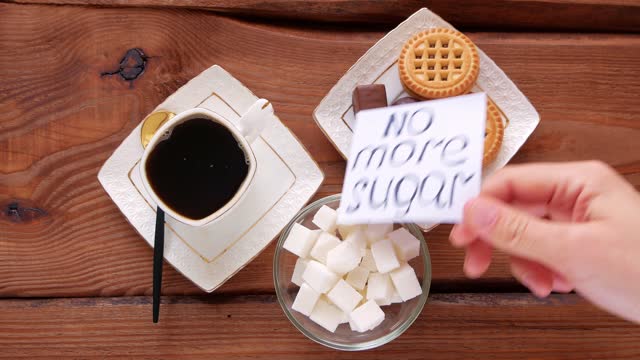Five Simple Tips to Start Your Day for Lower Blood Pressure
As fitness enthusiasts, it’s important to maintain a healthy blood pressure level.
High blood pressure can lead to serious health issues, such as heart disease and stroke. But starting your morning off on the right foot can help lower your blood pressure throughout the day.
For your information, high blood pressure, commonly referred to as hypertension, does not have any symptoms. Thus, the only way to establish whether you have high blood pressure is through taking a blood pressure reading.
Mayo Clinic claims that when left unchecked for a prolonged period, high blood pressure can hurt various parts of your body, especially your heart, arteries, eyes, brain, and kidneys.
Thankfully, you can control your blood pressure with simple lifestyle changes. As John Higgins, MD advises, tweaking your morning routine, when your blood pressure starts rising, is the best way to lower your blood pressure.
Over time, it has occurred that cardiac events like heart attack and stroke mostly happen in the morning. And sometimes, these heart problems stem from high blood pressure.
This guide will enlighten you on the benefits of lower blood pressure and offer professional tips to control your blood pressure when starting your day.
So, why should you keep your blood pressure low?

Advantages of Maintaining Healthy Blood Pressure
Low blood pressure, also known as hypotension, is potentially beneficial. But it is important to note that excessively low blood pressure can pose health risks.
Here are some potential benefits of healthy blood pressure:
Lesser Risk of Cardiovascular Diseases
In some cases, low blood pressure may be associated with a reduced risk of cardiovascular diseases like heart attack and stroke.
Lower blood pressure can put less strain on the heart and blood vessels, potentially lowering the risk of conditions related to high blood pressure.
Reduced Strain on the Heart
Low blood pressure means less force exerted on the walls of the arteries with each heartbeat. This reduced strain on the heart may help to maintain heart health and reduce the risk of heart disease in some individuals.
Improved Kidney Function
Lower blood pressure can help to protect kidney function.
High blood pressure is a risk factor for kidney disease, so maintaining lower blood pressure levels may benefit kidney health in certain cases.
Reduced Risk of Aneurysms
Aneurysms are bulges or weak spots in blood vessels that can rupture and cause severe health complications.
Lower blood pressure can reduce the risk of aneurysms, particularly in individuals with a family history or other risk factors.
Lower Risk of Bleeding
Lower blood pressure can reduce the risk of bleeding, particularly in individuals who are prone to conditions like hemorrhoids or gastric ulcers.

Effective Daily Tips to Lower Blood Pressure
Here are five things you can do first thing in the morning to lower your blood pressure:
Cut Your Caffeine Intake
Research shows that caffeine consumption can cause a temporary increase in blood pressure, particularly if you consume it in large quantities or have a sensitivity to it. This is because caffeine stimulates your nervous system and increases the production of certain hormones like adrenaline, which can cause your blood vessels to constrict and your heart rate to increase.
While this temporary increase in blood pressure may not be cause for concern in healthy individuals, it can be problematic for those who already have high blood pressure or are at risk for developing it. Studies have found that regularly consuming caffeine can lead to sustained increases in blood pressure over time, which can increase your risk of heart disease and other health problems.
By limiting your caffeine intake in the morning, you can help prevent these negative effects on your blood pressure. Instead of reaching for a cup of coffee or energy drink first thing in the morning, try starting your day with a glass of water or a cup of herbal tea. These beverages can help hydrate your body and provide a gentle boost of energy without the stimulating effects of caffeine.
If you choose to consume caffeine, be sure to do so in moderation and at appropriate times throughout the day. It is generally recommended that adults consume no more than 400 milligrams of caffeine per day, which is roughly the amount found in four cups of brewed coffee. Additionally, it is best to avoid consuming caffeine after mid-afternoon, as this can interfere with your sleep and lead to further increases in blood pressure.

Take a Balanced Breakfast
Studies have shown that skipping breakfast can increase the risk of hypertension, or high blood pressure.
When you skip breakfast, your body’s stress response is activated, leading to an increase in blood pressure. But, when you have a balanced breakfast, your body’s stress response is reduced, leading to a decrease in blood pressure.
So, what makes a balanced breakfast?
A balanced breakfast should comprise carbohydrates, protein, and healthy fats. Carbohydrates provide energy and fiber, while protein and healthy fats help keep you feeling fuller for longer and stabilize your blood sugar levels. Some examples of a balanced breakfast include whole grain toast with avocado and eggs, oatmeal with nuts and fruit, or a smoothie with spinach, banana, and almond milk.
In addition to reducing blood pressure, having a balanced breakfast can also improve your overall health and fitness. Eating breakfast can boost your metabolism, helping you burn more calories throughout the day. It can also improve your cognitive function and mood, helping you stay focused and alert during your workouts.
If you’re someone who struggles with eating breakfast, there are some strategies you can use to make it easier. One strategy is to prepare your breakfast the night before, such as overnight oats or a breakfast burrito that you can quickly reheat in the morning. Another strategy is to start small and gradually increase the amount you eat for breakfast. Even a small breakfast such as a piece of fruit or a hard-boiled egg can help you start your day on the right foot.
While having a balanced breakfast can help reduce your blood pressure, it is not a substitute for other healthy lifestyle choices. Regular exercise, maintaining a healthy weight, and reducing sodium intake are also important for maintaining healthy blood pressure levels.

Avoid Sugar
Sugar can wreak havoc on our bodies. Among the most significant ways it can damage our health is by raising our blood pressure.
When we consume sugar, our bodies break it down into glucose, which enters our bloodstream. This triggers the release of insulin, a hormone that helps our cells absorb glucose for energy. However, when we consume too much sugar, our bodies can become resistant to insulin, leading to a host of health problems, including high blood pressure.
Research shows that reducing sugar intake can help lower blood pressure. One study also found that reducing sugar intake by just 10% can lower blood pressure by up to 5 points. Another study found that cutting out sugar entirely for just nine days can significantly reduce blood pressure levels.
So, how can we reduce our sugar intake and lower our blood pressure?
The first step is to become more aware of the sugar content in the foods we eat. Many processed foods, including cereals, bread, and even savory snacks, contain high levels of added sugar. So, read food labels and choose whole, unprocessed foods to avoid hidden sources of sugar.
Another way to reduce sugar intake is to swap sugary drinks for water or unsweetened beverages. Sodas, sports drinks, and even many fruit juices are loaded with sugar and can contribute significantly to our daily intake. By choosing water or unsweetened tea or coffee instead, you can significantly reduce your sugar intake and help lower your blood pressure.
You can also satisfy your sweet tooth with healthier alternatives to sugar. Fresh fruit, for example, is a natural source of sweetness that can satisfy your cravings without spiking your blood sugar levels. Other options include natural sweeteners like honey or stevia, which can be used in moderation to add sweetness to our favorite foods and drinks.

Engage in Exercise
While medication is often prescribed to control hypertension, regular exercise can also play a significant role in reducing blood pressure levels.
When you engage in physical activity, your heart works harder to pump blood throughout the body, and this increased workload helps to strengthen the heart muscle. Over time, this can lead to a decrease in blood pressure, as the heart becomes more efficient at delivering oxygen and nutrients to the body’s tissues.
In addition to strengthening the heart, regular exercise can also help to improve the health of your blood vessels. When you exercise, the walls of your blood vessels become more flexible and elastic, allowing blood to flow more easily through them. This can help to lower blood pressure, as the blood can move more freely through the circulatory system.
Another way that exercise can help lower blood pressure is by reducing stress levels. When you engage in physical activity, your body releases endorphins, the natural mood-boosting hormones. These hormones can help to reduce stress and anxiety, which are known to contribute to high blood pressure.
Note that the type and intensity of exercise you engage in can significantly impact your ability to lower blood pressure. Aerobic exercise, such as jogging, cycling, or swimming, is particularly effective at reducing blood pressure, as it increases the heart rate and improves cardiovascular health. Resistance training, such as weightlifting, can also be helpful, as it helps to build muscle mass and improve overall fitness levels.
If you have hypertension, speak with your doctor before beginning any new exercise routine. Your doctor can help you determine the best types of exercise for your specific needs and guide you on how to exercise safely and effectively.

Meditate
Meditation has been used for centuries to promote relaxation, reduce stress, and improve overall well-being. Recent studies have shown that regular meditation can also significantly affect blood pressure levels, particularly when practiced in the morning.
One study published in the American Journal of Hypertension also found that meditating for just 20 minutes in the morning significantly reduced both systolic and diastolic blood pressure. Systolic blood pressure is the pressure in your arteries when your heart beats, while diastolic blood pressure is the pressure in your arteries when your heart is at rest.
So, how does meditation lower blood pressure?
The exact mechanism behind this phenomenon is still unclear, but researchers believe that meditation may help to reduce stress and promote relaxation, which can, in turn, help to lower blood pressure.
When we experience stress, our bodies release hormones like cortisol and adrenaline, which can cause our blood pressure to rise. By meditating regularly, we train our bodies to better manage stress and reduce the release of these stress hormones. This, in turn, can help to keep our blood pressure in a healthy range.
Additionally, other studies suggest that meditation may help to improve the function of the endothelium, which is the lining of our blood vessels. When the endothelium is functioning properly, our blood vessels are more relaxed, which can help to lower blood pressure.
If you’re interested in incorporating meditation into your morning routine to help manage your blood pressure, there are a few things to keep in mind. First, find a quiet and comfortable place where you can sit and meditate without distractions. You may want to use a guided meditation app or video to help you get started.
Next, focus on your breath and try to clear your mind of any distracting thoughts. If your mind starts wandering, simply bring your focus back to your breath. It may take some practice to get the hang of meditation, but with time and patience, you’ll soon find that it easier to quiet your mind and find a sense of calm.

Over to You…
As a bottom line, it’s crucial to maintain blood pressure within a healthy range, as excessively low blood pressure can lead to symptoms such as dizziness, fainting, fatigue, and poor concentration.
Extremely low blood pressure can also impair organ function and cause complications, so you should monitor blood pressure levels and seek medical advice if you are experiencing symptoms or concerns.
Looking to stay healthy without breaking the bank? Don’t look any further.
Subscribe to Kloud Iron’s 28-day fitness program and begin your journey toward optimal mental health and physical fitness. To learn more about Kloud Iron Fitness Hub’s offers, contact us today or message/follow us on Facebook and Instagram. We are also available on YouTube.


Leave Your Comment